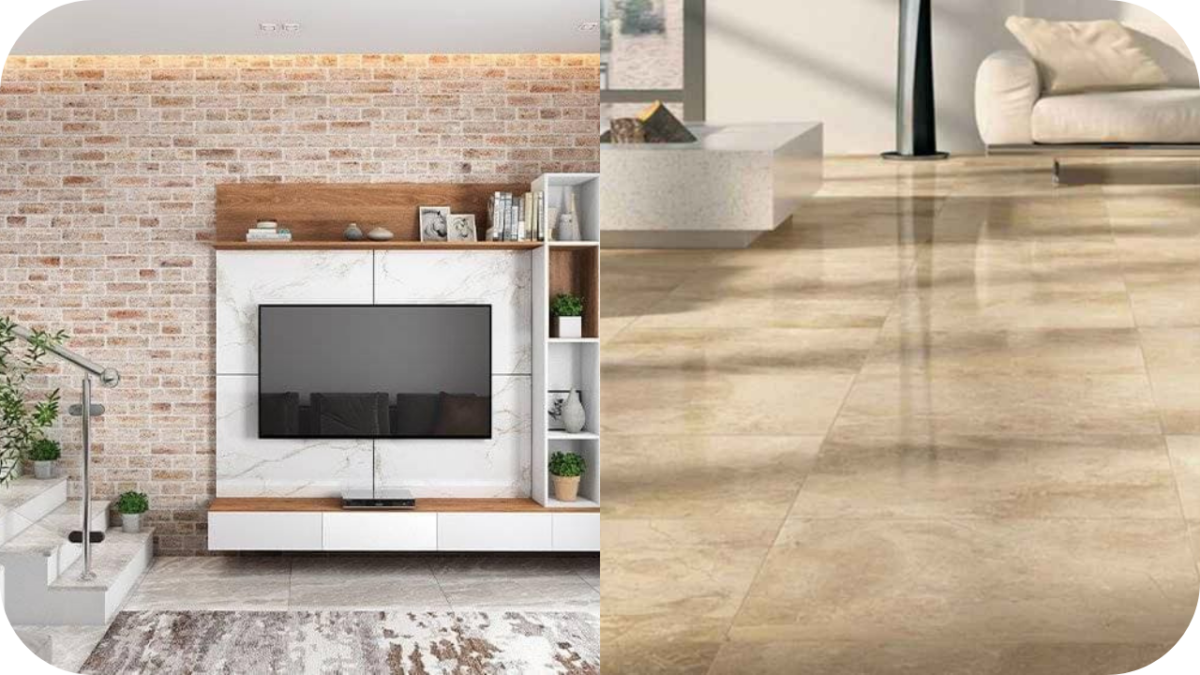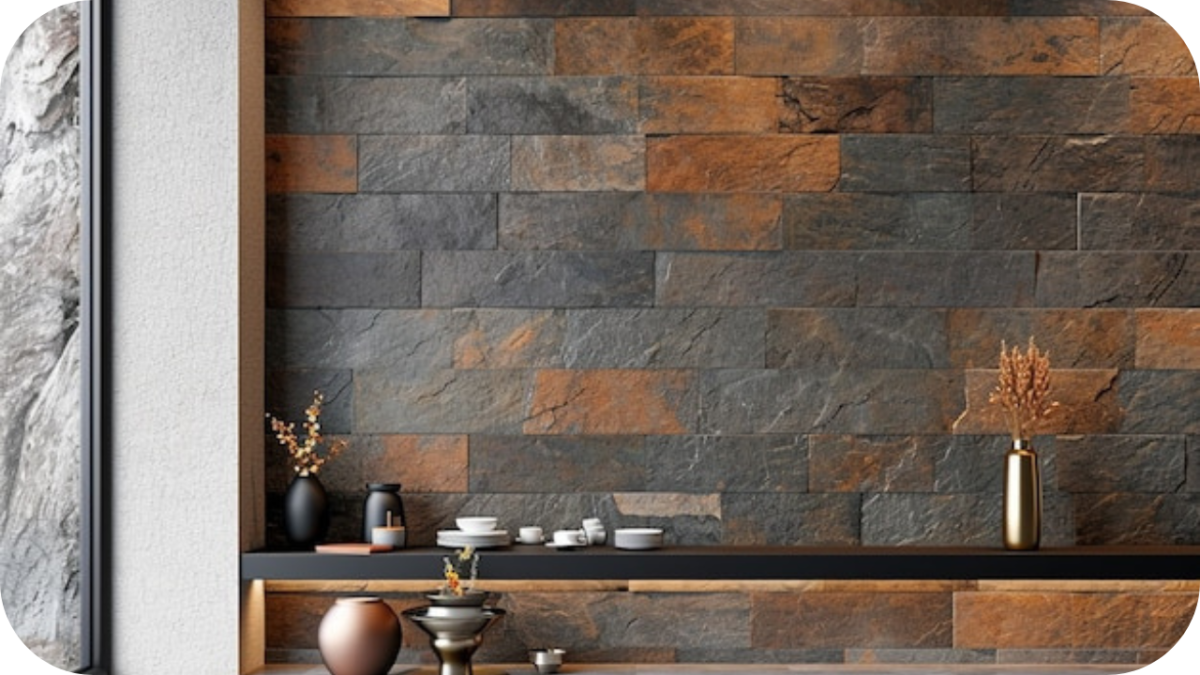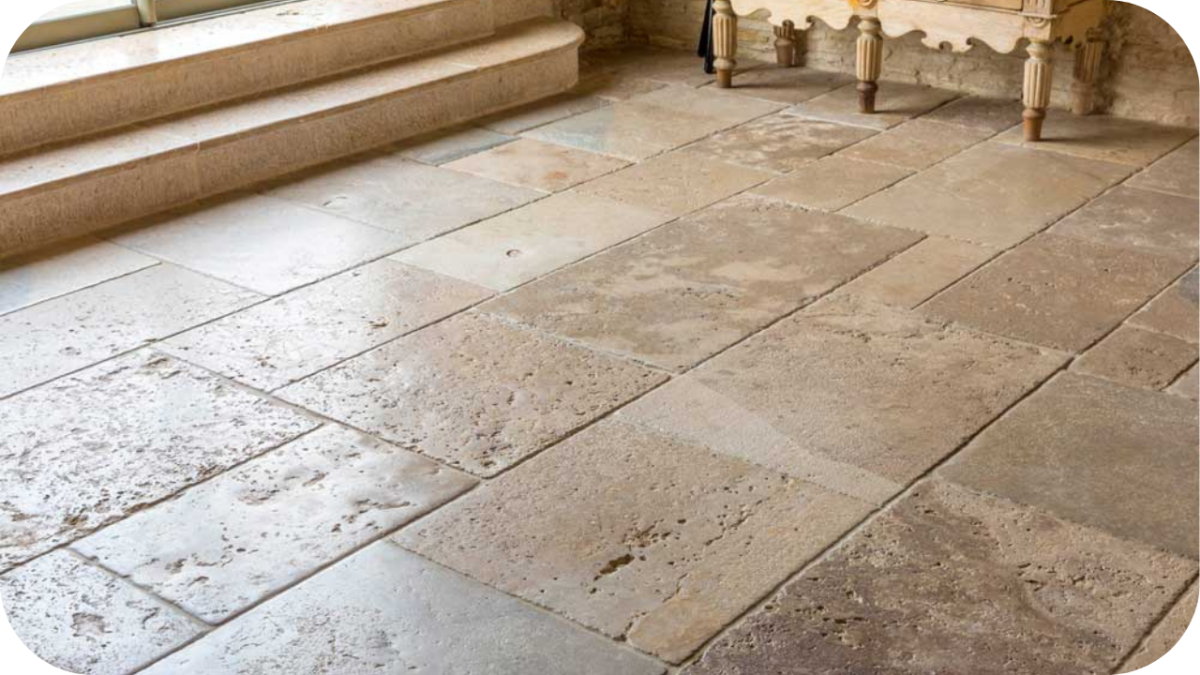Rustic vs Polished Stone for Indoor Spaces
Selecting the right stone finish for indoor spaces can significantly influence your home’s aesthetics and functionality. Polished stone offers a sleek, reflective surface that enhances colour and pattern, imparting a luxurious feel.
Conversely, rustic stone provides a natural, earthy ambiance with its textured, matte finish. Understanding each option’s characteristics, benefits, and considerations is essential in making an informed decision that aligns with your design preferences and lifestyle needs.
What Is Rustic Stone?
Rustic stone refers to natural stone with a rough, textured finish highlighting its raw and organic character. Unlike polished surfaces, rustic stone is intentionally left unrefined, showcasing natural pits, grooves, and tonal variations. This untouched quality creates a warm, earthy look that complements farmhouse, industrial, and heritage-style interiors.
Common types include slate, sandstone, and limestone, which are often used for feature walls, fireplaces, and high-traffic flooring. Its coarse surface adds visual depth and improves grip underfoot, making it ideal for spaces where both style and safety matter.
Each slab of rustic stone brings unique imperfections that enhance the authenticity and charm of a space.
What Is Polished Stone?
Polished stone refers to natural stone that has been mechanically ground and buffed to achieve a smooth, glossy surface. This high-shine finish enhances the stone’s natural colours and veining, creating a sleek and refined appearance ideal for modern interiors.
Commonly used stones for polishing include marble, granite and travertine. These materials respond well to the process, producing a mirror-like effect that reflects light and adds a sense of spaciousness to rooms. Polished stone is often found in kitchens, bathrooms and entryways, where elegance and easy cleaning are priorities.
The finish is non-porous, making it more resistant to staining and moisture absorption than textured alternatives.
Rustic Stone vs Polished Stone: Key Differences in Indoor Application
Choosing between rustic and polished stone is not just a design decision. It influences your space’s overall feel, maintenance requirements, and style direction. Below are the most relevant differences to guide your choice.
1. Surface Texture and Natural Appearance
Rustic stone features a coarse, irregular surface that retains the stone’s raw and organic feel. It celebrates imperfections, tonal variation, and earthy charm.
On the other hand, Polished stone is refined and smooth, showcasing a glossy, mirror-like finish that enhances colour and veining. Each creates a vastly different tactile and visual experience indoors.
2. Design Style Compatibility
Rustic stone complements heritage, industrial, and country-style interiors, bringing natural warmth and character. It pairs beautifully with timber, exposed brick, and vintage finishes.
In contrast, polished stone fits effortlessly into modern, minimalist, and high-end design schemes, offering a clean, sophisticated aesthetic with a sleek, reflective surface that adds a sense of light and space.
3. Light Reflection and Room Brightness
Polished stone reflects light exceptionally well, making it ideal for brightening darker interiors or compact rooms. It contributes to a clean, airy ambiance.
The rustic stone absorbs more light, creating a grounded, cosy environment with its matte and textured surface. The choice can influence how open or intimate a space feels.
4. Colour and Pattern Enhancement
The polishing process enhances the stone’s natural colour, detail, and veining, making it appear more vibrant and defined. Rustic stone retains a muted, earthy palette with natural variation and subtle tones.
5. Maintenance and Cleaning Requirements
Polished stone is relatively easy to clean and maintain with regular wiping. However, it may show fingerprints, smudges, or fine scratches over time.
Rustic stone, while more forgiving in hiding marks, may require sealing and occasional deep cleaning to preserve its raw look and prevent staining in high-contact areas.
6. Installation and Visual Impact
Rustic stone often involves more manual placement to preserve its organic form, making each application unique. It adds texture and depth to surfaces, often as a visual focal point.
Polished stone offers a more uniform look and can be laid in clean lines or geometric patterns for a precise, tailored finish.
7. Cost and Value Perception
Rustic stone tends to be more affordable depending on the type and finish, often because it requires less refinement.
Polished stone may come at a higher price due to the labour-intensive process and premium finish. The final cost will also reflect the installation complexity and the material chosen.
8. Feel and Atmosphere
Rustic stone creates a grounded, homely feel that brings nature indoors. Its organic surface makes spaces feel tactile and warm.
Polished stone, by contrast, contributes to a more formal, luxurious atmosphere. It can make interiors feel sleek and curated, often aligning with high-end contemporary aesthetics.
Choosing Stone Based on Interior Design Styles
The stone finish you choose can elevate or clash with your interior style. Matching the right texture to your design theme ensures visual harmony and long-term satisfaction. Here’s how rustic and polished stone perform across different interior styles:
- Traditional and country interiors: Rustic stone is well suited to classic and country-style homes, where its natural texture and earthy tones complement timber beams, vintage furnishings and soft neutral fabrics. It enhances warmth and character, supporting a lived-in, homely atmosphere.
- Industrial and coastal themes: The organic surface of rustic stone pairs effortlessly with exposed brick, weathered timber and metal finishes. It softens harsh materials while maintaining a raw, authentic appeal, making it a strong choice for relaxed, nature-inspired settings.
- Modern and minimalist interiors: Polished stone fits clean-lined, contemporary spaces with open layouts. Its reflective surface brightens interiors and pairs well with glass, metal and streamlined cabinetry, creating a sense of order and clarity.
- Luxury and high-end designs: Polished finishes elevate premium interiors with sharp veining, smooth finish and bold presence. They work seamlessly with rich textures, elegant lighting and curated design schemes that aim to impress.
- Transitional interiors: Honed or semi-polished stone provides a middle ground, offering a subtle sheen with light texture. This makes it ideal for interiors blending traditional and modern elements, achieving warmth and sophistication.
Where to Use Rustic or Polished Stone Indoors: Room-by-Room Ideas
Not every stone finish suits every space. Matching the texture and tone of your stone to the function and feel of each room ensures both style and practicality. Here’s how rustic and polished stone perform in different areas of the home:
1. Living Rooms: Create Warmth and Texture with Rustic Stone
Rustic stone is perfect for feature walls or fireplace surrounds in living rooms. Its raw surface adds depth and visual interest, working well with timber, natural fabrics, and layered textures. This finish supports a relaxed, grounded space for comfort, conversation, and everyday living.
2. Entryways and Hallways: Make a Lasting First Impression
In entryways, rustic stone offers an inviting, earthy welcome, while polished stone brings brightness and a clean finish.
The reflective quality of polished surfaces helps visually expand narrow corridors, creating a sense of space and sophistication right from the moment you step inside.
3. Kitchens: Sleek Functionality with Polished Finishes
Polished stone suits kitchens where cleanliness and clarity matter. Its smooth surface resists moisture and reflects light beautifully on benchtops or splashbacks. This finish adds a crisp, modern edge and highlights the stone’s natural colours, making it functional and visually striking.
4. Bathrooms: Spa-Like Calm with Polished Stone
Bathrooms benefit from the smooth, light-enhancing qualities of polished stone. Whether on walls, vanity surrounds or built-in niches, it delivers luxury and easy maintenance.
Its clean lines and high-end finish make it an excellent fit for serene, spa-inspired interiors.
5. Dining Areas: Rustic Elegance for Shared Spaces
Rustic stone adds warmth and authenticity to dining areas. It complements wooden furniture, warm lighting, and natural textiles, creating a comfortable and intimate setting for meals and gatherings. The textured surface introduces depth and character, enhancing the overall dining experience.
6. Home Offices or Studies: Set the Tone for Focus
Blending rustic and polished finishes across different rooms allows for texture and contrast. Rustic stone is best used in communal, relaxed spaces, while polished stone suits areas that benefit from light and order.
Which One Should You Choose?
Selecting between rustic and polished stone depends on more than just aesthetics. Start by assessing the style of your home. Rustic stone suits traditional, country and relaxed interiors, while polished stone works best in modern, minimalist or high-end spaces.
Consider how much natural light is available. Polished surfaces reflect light and can brighten darker rooms, whereas rustic finishes absorb light, creating a more grounded, intimate feel.
Maintenance is another key factor. Polished stone is easier to clean but can show smudges or scratches, especially in high-contact areas. While better at concealing wear, rustic stone may require periodic sealing and deeper cleaning due to its textured surface.
Also, factor in tactile preference and visual continuity. Rustic stone offers warmth and texture, while polished finishes bring clarity and precision. Finally, think about where each finish will be placed.
Maintenance Tips for Rustic and Polished Stone Surfaces
Each stone finish needs specific care to maintain its look and longevity. Follow these tips to protect your surfaces:
- Daily cleaning for polished stone: Wipe surfaces regularly with a soft, non-abrasive cloth and a pH-neutral cleaner. This helps maintain the shine without damaging the surface.
- Avoid harsh products: Avoid using acidic or abrasive cleaners on polished stone. These can cause dullness, etching or discolouration over time.
- Routine care for rustic stone: Dust and debris can settle into textured surfaces. Use a soft brush or vacuum with a brush attachment to remove loose particles effectively.
- Deep cleaning rustic surfaces: Clean with a mild, stone-safe detergent and rinse with clean water. Avoid high-pressure cleaning, which may damage the stone’s natural texture.
- Sealing requirements: The supplier recommends that rustic and polished stone be sealed. Rustic stone often requires more frequent sealing due to its porosity.
- Periodic resealing: Reapply sealant as needed, particularly in moisture-prone or high-use areas, to protect against stains and water absorption.
- Follow supplier advice: Refer to professional care instructions based on the specific stone type and finish for best results.
Why Choose Splendour in Stone for Your Indoor Stone Needs
Finding the right supplier is just as important as choosing the right stone. Here’s why Splendour in Stone is a preferred choice for indoor applications:
- Trusted Australian supplier: Splendour in Stone is recognised for delivering high-quality natural stone across Australia with consistent results and reliable service.
- Extensive product range: Their selection includes rustic and polished stone finishes, suited to various interior design styles.
- Expert support: The team offers personalised advice based on your design preferences, functional needs and room-specific considerations.
- Quality assurance: Each stone is carefully sourced and assessed for durability, consistency and visual appeal to meet high performance standards.
- Accessible and convenient: With a showroom in Victoria and efficient delivery across Australia, sourcing premium stone is straightforward and stress-free.
- Reputation for excellence: Designers, architects and homeowners rely on Splendour in Stone for dependable service and lasting design outcomes.
- Tailored indoor solutions: Whether you’re renovating or building new, their products and expertise help create refined, cohesive interiors with lasting impact.
Conclusion
Choosing between rustic and polished stone depends on how you want your space to look, feel and function. Each finish offers distinct advantages when used thoughtfully.
For expert guidance and premium stone tailored to your interior, visit Splendour in Stone or speak with our team today. Let your space reflect quality, character and timeless design.





